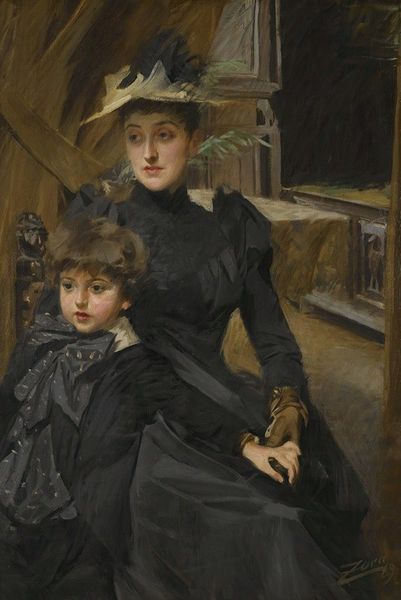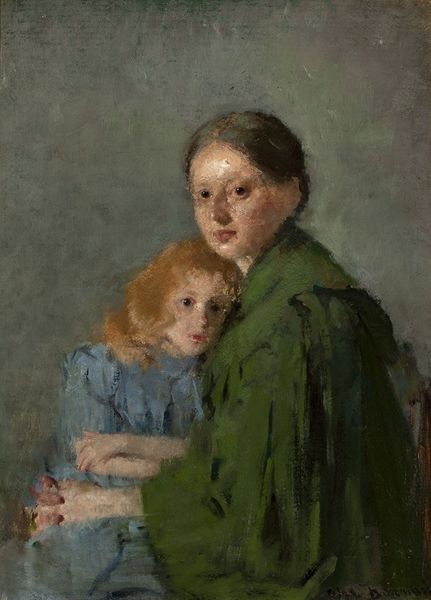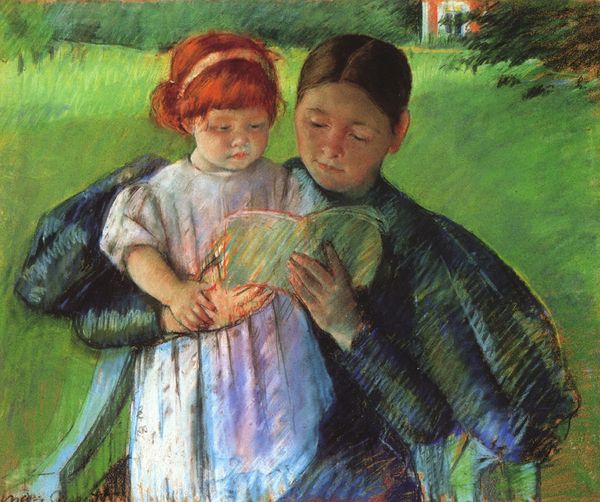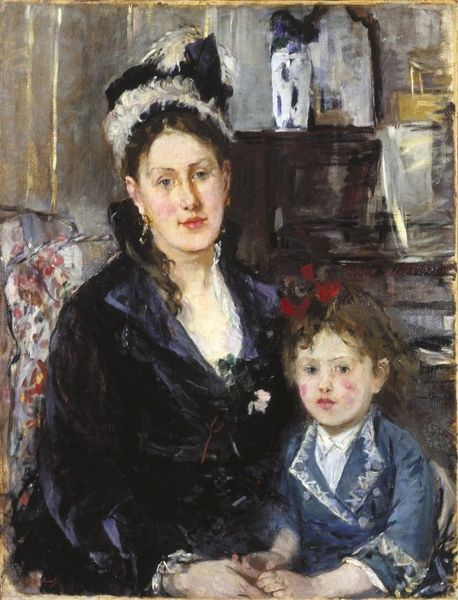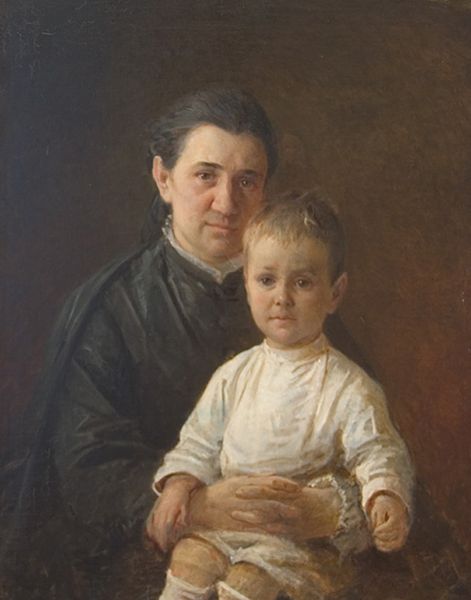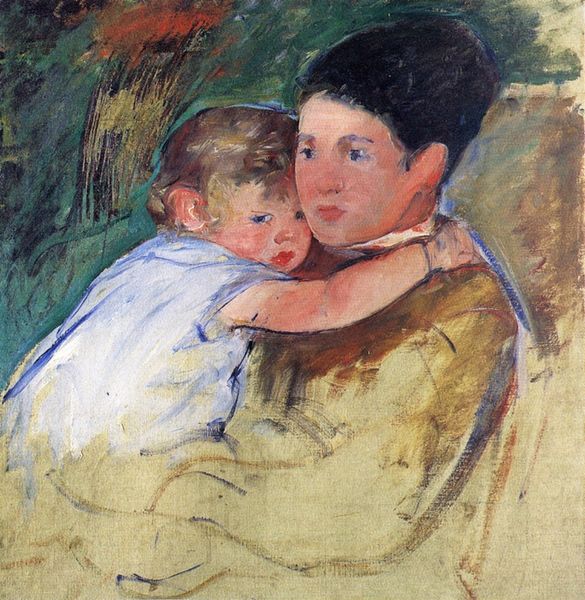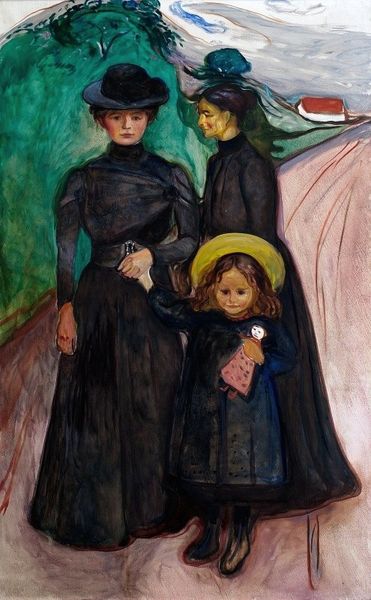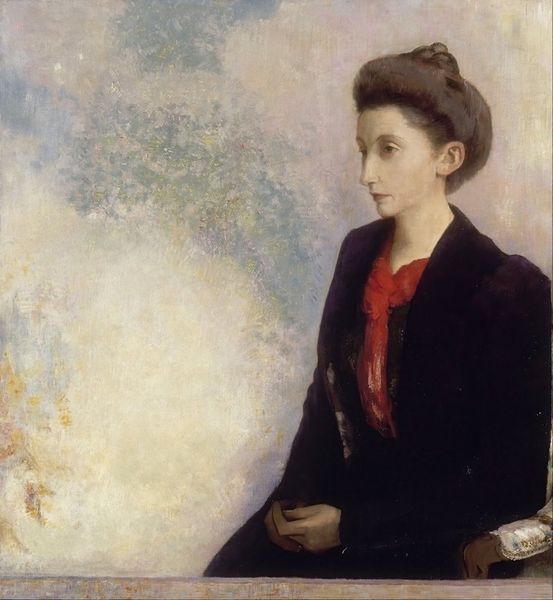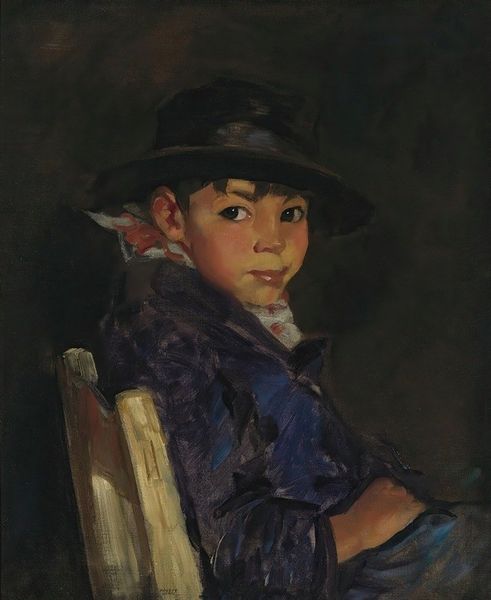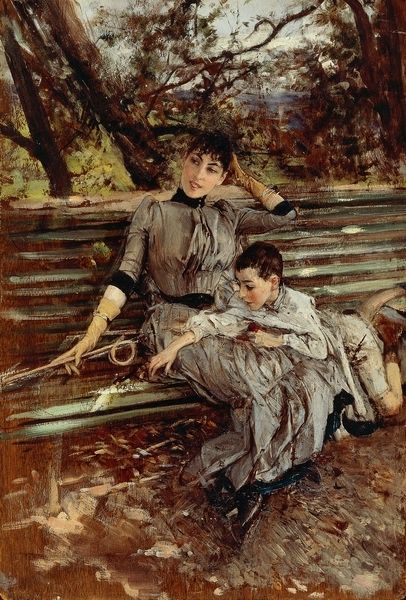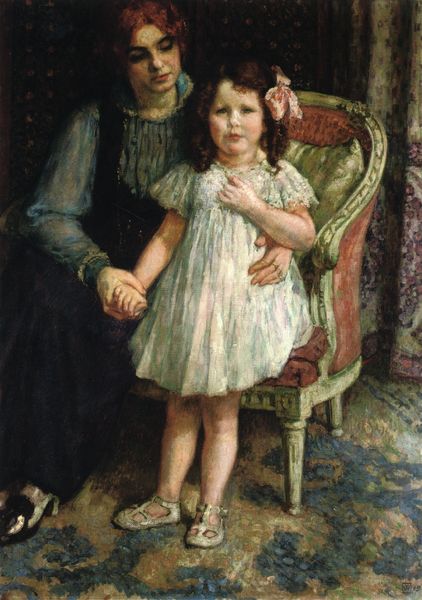
Copyright: Public domain
Curator: Georgios Jakobides painted this captivating piece, "The Artist's Wife with Their Son," around 1895. It’s rendered in oil paint and possesses qualities we often associate with the Impressionists, even if the setting feels firmly rooted in realism. What are your immediate thoughts? Editor: Immediately, I’m struck by the composition. The artist's wife dominates the frame, a statuesque figure in dark clothing. It has a gravity and formality that feels… reserved. Curator: Yes, there's a clear power dynamic visualized. Look closely at the textures; you see a significant contrast between her attire and her son's more plain coat, which are indicative of how gendered labor was depicted in this period. Women, confined to domesticity, were seen as representations of taste and wealth. Editor: Interesting. To me, the use of color is the most intriguing aspect of this artwork. It presents a somber mood; however, I appreciate that a subtle gradient is present, which keeps your eye moving around the frame to focus on essential elements. I’m also drawn to the subtle hints of light breaking through the leaves. Curator: Consider that this was made during the rise of industrialism, and how artists started engaging with depicting scenes of bourgeois family life; paintings such as these give visual cues to the labor hierarchies. Do you observe that, even at leisure, markers of class are being produced and displayed? Editor: I do. But how can we miss that striking hat? This isn't just an accessory; it signifies the wearer’s social positioning—almost a form of ornamentation or status symbol. What would you like a modern audience to understand regarding this particular piece? Curator: For today’s audience, I wish they recognize the visual cues in the work—labor, family, and production. When brought together, we gain insight into our shared understanding of wealth in our everyday interactions with these forms and how we might reassess their underlying meanings. Editor: Reflecting upon this artwork today has allowed me to dive deeper into how forms shape one's emotional responses to visual stories. Thank you for lending me a hand today; this was enriching.
Comments
No comments
Be the first to comment and join the conversation on the ultimate creative platform.
